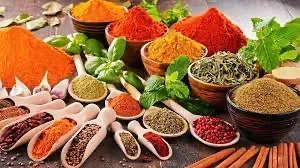A Taste of Other Cultures

Contributor: Tom Lang
Are you hesitant to explore foods from other cultures because you’re unsure how to fit them into your diabetes management plan? Get cooking with three delicious main course recipes that are healthy and lower in carbohydrates! We’ll explore dishes from South Asia, South Africa, and Mexico to delight your taste buds and bank account and honor traditional foods from different cultures.
VEGAN RED LENTIL CURRY
This fabulous South Asian curry recipe has an incredible 5 out of 5-star rating from over 1,700 people who made it. You can make it as mild or spicy as you like.
Many curry recipes use a lot of butter, ghee, or oil loaded with fat, and curries are often high in carbs and sugar. Those ingredients are not healthy for anyone. This curry recipe is nutritious, delicious, easy to make, low in cost, and easily frozen for another day. The ingredients are high in antioxidants and anti-inflammatory properties, which may help to lower your blood pressure and help in blood sugar management.
Tom’s tips:
- Despite being extremely high in saturated fat (87%), the coconut oil and full-fat coconut milk used in this recipe are healthy. You can read about the different types of saturated fat here and why saturated fat from coconut has several health benefits, including improvements in cognitive function and a more favorable lipid profile in your blood tests.
- If you don’t want to use coconut oil, I recommend virgin sesame oil, which is very mild in flavor, clinically proven to help lower blood pressure, and has other health benefits.
- I don’t recommend toasted sesame oil (the common dark-colored oil) for this recipe because it has a strong flavor that can overpower the other ingredients.
- You can swap out the coconut milk with organic, non-GMO, soy, cashew, or oat milk. Or use a good dollop of any organic, fat-free, Greek-style yogurt. If you have a coffee grinder, try grinding some raw, unsalted sunflower seeds or pepitas (raw, unsalted pumpkin or squash seeds) and add them to any plant-based milk mentioned here.
- To lower the carbs, omit the rice and make a rice substitute using cauliflower or carrots. Look online for cauliflower rice and cauliflower Naan recipes. They are very low in carbs, high in nutrition, and delicious!
- Adjust the spice to your liking. If you can’t tolerate spicy food, omit the chili peppers. If you can handle a little heat, use one serrano pepper (remove the seeds) or one jalapeño pepper (with or without the seeds). If you really like things spicy, use two serranos, chile de arbol, habanero, or any other hot pepper.
TOMATO BREDIE
This traditional South African Bredie recipe is best cooked slowly – ideally in a slow cooker.
Bredie is an Afrikaans word meaning stew. The flavors are greatly improved if you make it a day in advance. This recipe is extremely high in protein (due to the beef used) but lower in fiber. You can make this stew vegan, lower in carbs, or higher in fiber with a few easy changes.
Tom’s tips:
- If you don’t want to use beef, you can swap it for chicken.
- To make the recipe vegan, replace the meat with extra-firm tofu, tempeh, lentils, chickpeas (garbanzos), or any other dried beans, and use vegetable stock instead of chicken stock.
- You can omit the sugar from this recipe or use a bit of date sugar instead.
- Reduce the carb content by cutting back on the potatoes – use one instead of three.
- Boost the fiber and nutritional content by adding sliced celery, bell peppers, mushrooms, collard greens, or any other low-carb vegetable that doesn’t get mushy when cooked.
MEXICAN-INSPIRED BOWL
This Mexican-inspired bowl can be served hot or cold, depending on the season.
When we think of Mexican food, we typically think of tacos, rice and bean dishes, guacamole, salsas, and chicken and pork dishes. Instead, try this delicious, low-carb, healthy, Mexican-inspired bowl to delight your taste buds!
Tom’s tips:
- Use more or less spicy peppers to suit your taste.
- If you don’t like cilantro, use parsley instead.
- If cannellini beans are unavailable, substitute any white-colored beans.
- Lower the carb and sugar content by omitting the corn and using more salsa.
- For whole grains, choose buckwheat, brown rice, quinoa, millet, etc.
Inspired to get cooking yet? Here are a few more tips to get you on your way!
- Here’s a great video you can use as a soul food resource: https://nutritionfacts.org/video/soul-food-thats-good-for-the-soul
- To make your own low-carb, low-cost “noodles”, pick up a spiralizer tool from your favorite kitchen gadgets store and use it on:
- Zucchini: has almost no carbs.
- Carrots: higher in carbs than zucchini but way lower than wheat noodles.
- Sweet Potatoes: higher in carbs than zucchini but way lower than wheat noodles.
- Another low-carb noodle substitute is spaghetti squash. Just poke some holes in the squash with a stainless steel skewer, bake it in the oven on a cookie sheet, and when you cut it open, you have what looks like spaghetti!
- You can buy almost zero-carb noodles at some supermarkets made from an Asian potato-like vegetable called konjac, but it smells strange and can cause digestive upset for some people. If you’re adventurous, try it.
- Top your “noodles” with a low-sodium, healthy tomato sauce. Combine the tomato sauce and 1 cup of any cooked (or BPA-free canned) beans in a blender and blend until smooth. You can dilute it with a bit more tomato sauce if it’s too thick.
Tom Lang has worked as a research assistant at the pharmaceutical giant Hoechst in Germany and at The Albert Einstein College of Medicine in New York. Trained as a biologist, he lives on the west coast with his wife, Cate, and their rescued dog, Te amo. Tom has coached over 1,000 women and men with prediabetes and diabetes and has helped two family members with diabetes.




